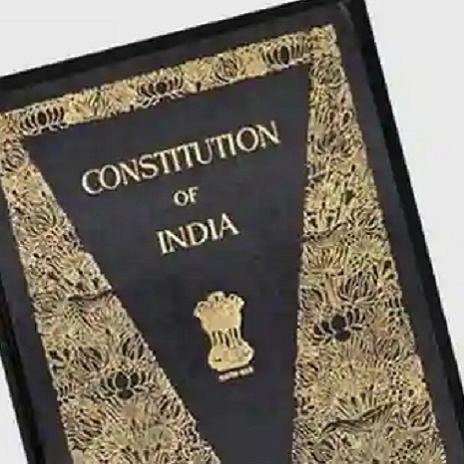In India, a constitutional crisis is a period of government that the President of India can declare in particular emergencies. Many articles of the Constitution, which provide Fundamental Rights to Indian people, can be overruled by the President on the recommendation of his council of ministers.

Part XVIII of the Indian Constitution, from Article 352 to 360, contains the circumstances that give. These rules enable the central government to respond to any unusual event properly.
The incorporation’s rationale is to protect the nation’s independence, unity, integrity, and security, as well as the democratic system and the Constitution.
Types of Emergencies in India
National Emergency
Article 352 of the National Emergency Act deals with the “Proclamation of Emergency” or “National Emergency.” By issuing a Proclamation, the President of India has the authority to declare an emergency in India or any portion of India. If the President believes that a grave emergency exists in India and that it poses a threat to the nation’s security, he may declare an emergency under this article.
- External Violence in the War
- Armed Insurgency
- Armed Rebellion
The Forty-fourth Constitution Amendment Act of 1978 replaced the term “internal disturbance” with “armed rebellion.”
India has declared a national emergency three times thus far. This occurred during the years 1962 and 1977. The following is a brief description of the emergencies:
During the Indo-China conflict, the then-President of India, Dr Sarvepalli Radhakrishnan, declared a state of emergency from October 26, 1962, to January 10, 1968, on the grounds of external invasion.
When a country assaults another country without making a war declaration, this is known as external aggression. It is any nation’s unprovoked attack on another country. For instance, if a country assaults India without first issuing a formal declaration of war, India’s President may declare a National Emergency.
During the Indo-Pakistan conflict, the then-President of India, Mr V.V. Giri declared an emergency from December 3, 1971, to March 21, 1977. External aggression has been the reason, as stated previously.
Due to a squabble between the executive and the judiciary, the third Emergency was declared. Mrs Indira Nehru Gandhi, the then-Prime Minister of India, proclaimed an emergency with the assent of then-President Fakhruddin Ali Ahmed. From June 25, 1975, until March 21, 1977, it was in effect for 19 months.
State Emergency
Article 356 (Provisions in the event of Failure of Constitutional Machinery in States) deals with State Emergency or President’s Rule in the State. When the President of India gets a report from the Governor of a state stating that the state government is unable to follow out the Constitution’s provisions, he has the authority to declare a state of emergency.
From January 19, 1990, to October 9, 1996, the state of Jammu and Kashmir was under President’s Rule for six years and 264 days. Numerous external influences have always targeted the state. The Indian government implemented President’s Rule to handle the situation in Jammu and Kashmir, which was under military danger from Pakistan.
From June 11, 1987, to February 25, 1992, Punjab was under President’s Rule for 4 years and 259 days. The dominance of Khalistan Armed Forces, a Sikh group implicated in the genocide onslaught on Hindus, was the rationale for imposing President’s authority in Punjab.
The case of S.R Bommai v. Union of India[2] is a watershed moment in the history of President’s Rule in India. The case established the Union Government’s power under Article 356 of the Indian Constitution in connection to the State Emergency. This case gave way for judicial review of the President’s Rule. The court relied on Sarkaria’s Commission Report in reaching its decision in 1987.
The President’s Rule is subject to court review, and the President is only held accountable when an emergency is declared in one of the following circumstances:
- When a state deviates from the Union’s path due to constitutional non-conformity.
- When the state is experiencing a political crisis.
- When there is a state-wide internal rebellion
Financial Emergency
Article 360 is about “Financial Emergency Provisions.” When a scenario emerges, that poses a financial threat to India or any region of India, the President declares a Financial Emergency.
In India, no financial emergency has ever been declared. However, the threat of a financial emergency arose in 1990, but the issue was managed by the Indian government, which committed 46.91 tonnes of gold to the Bank of England and the Union Bank of Switzerland in July 1991 to generate $400 million.
Reasons for Declaring a State of Emergency
- National Emergency: The following are the reasons for declaring a national emergency:
- It is a war: When a country declares official war on India and a violent conflict involving military troops, India’s President may proclaim a state of emergency.
- Violence from the Outside: When one country assaults another without first formally declaring war, it is a unilateral strike against India by any country. In such conditions, India’s Governor may declare a state of emergency.
- Armed Insurgency: When people rebel against the current administration, resulting in the loss of lives and property, the President of India may declare a state of emergency.
- State Emergency: The failing of the state’s constitutional apparatus is the State Emergency Grounds for the Proclamation of the State Emergency. In this emergency, the Governor of the state may make a report to the President of India if he believes the state is not operating in compliance with the Constitutional requirements. However, if the President is pleased with the report, he or she has the authority to apply the President’s rule. Following that, the President would become the state’s executive leader.
- Financial Emergency: When a state emerges in the country that leads to a financial crisis in India, the President of India may declare an emergency to address the problem. Throughout this circumstance, the Central Authority may reduce or eliminate the budget allocated to the State and withhold salary from government employees.

